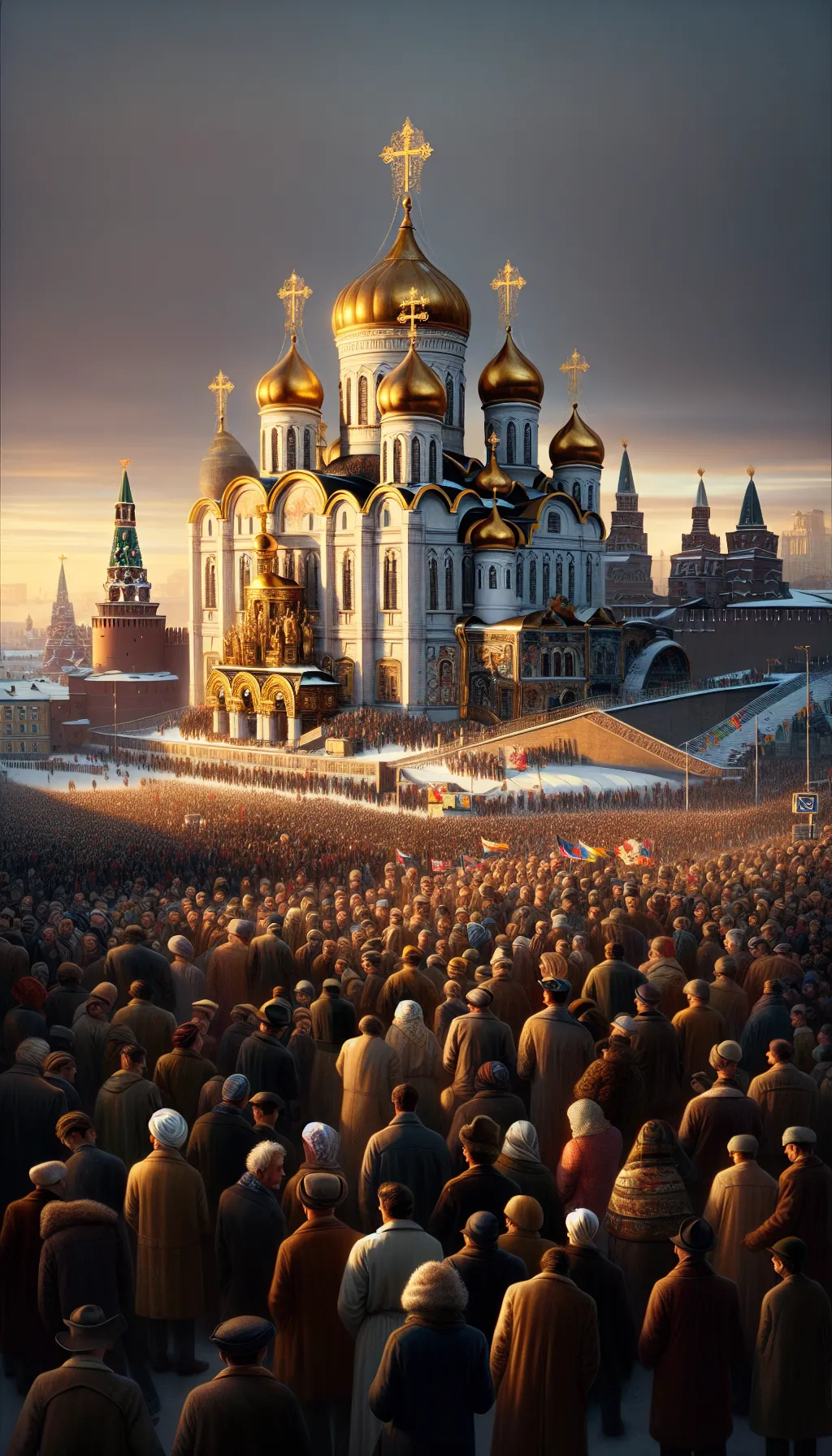Russia – The Ill-Fated Coronation of Nicholas II – May 26 (Old Style) / June 6 (New Style), 1896
TLDR;
- Event: Nicholas II was crowned as the last Emperor of Russia on May 26 (Old Style) / June 6 (New Style), 1896, in a grand ceremony at the Dormition Cathedral in Moscow.
- Tragedy: The following day, a stampede at Khodynka Field during coronation festivities resulted in 1,389 deaths and thousands injured, casting a shadow over his reign.
- Public Perception: Nicholas II’s decision to attend a ball the same evening, despite the tragedy, was seen as indifferent, damaging his public image.
- Legacy: The coronation and Khodynka tragedy foreshadowed the challenges of Nicholas II’s rule, which ended with the Russian Revolution of 1917 and the fall of the Romanov dynasty.
–
Story
The air was thick with anticipation as the sun rose over Moscow on May 26 (Old Style) / June 6 (New Style), 1896. The streets were alive with the clamor of thousands, all gathered to witness the coronation of Nicholas II, the last Emperor of Russia. The grandeur of the Dormition Cathedral (Uspensky Sobor) within the Moscow Kremlin stood as a testament to the power and tradition of the Russian Empire, but beneath the surface, the winds of change were already stirring.

Nicholas II ascended to the throne at a time of great uncertainty. The Russian Empire was vast, its people diverse, and its challenges immense. The coronation was meant to be a symbol of continuity and strength, a reassurance to the people that the empire would endure. The ceremony itself was a spectacle of opulence, with dignitaries from around the world in attendance, their presence a nod to Russia’s place on the global stage.
Yet, the day after the coronation was marred by tragedy. A catastrophic stampede occurred on the Khodynka Field, where over half a million people had gathered for a feast. Rumors of insufficient food and gifts sparked panic, leading to a crush that claimed the lives of 1,389 people, with thousands more injured. This disaster cast a long shadow over Nicholas’s reign, a grim omen of the turmoil to come.
Despite the tragedy, Nicholas II did not cancel the coronation festivities, attending a ball hosted by the French ambassador that evening, which worsened public perception of his indifference. His rule would be defined by struggle and upheaval, culminating in the Russian Revolution of 1917.
While the Khodynka tragedy was seen as a bad omen, it was not the sole cause of the dynasty’s downfall. Broader issues, such as the Russo-Japanese War, Bloody Sunday, and WWI failures, contributed more directly to the 1917 revolution. The coronation, intended as a moment of triumph, instead foreshadowed the challenges that would ultimately lead to the fall of the Romanov dynasty.
–
| Would a different approach to the coronation festivities have changed the course of Russian history? |